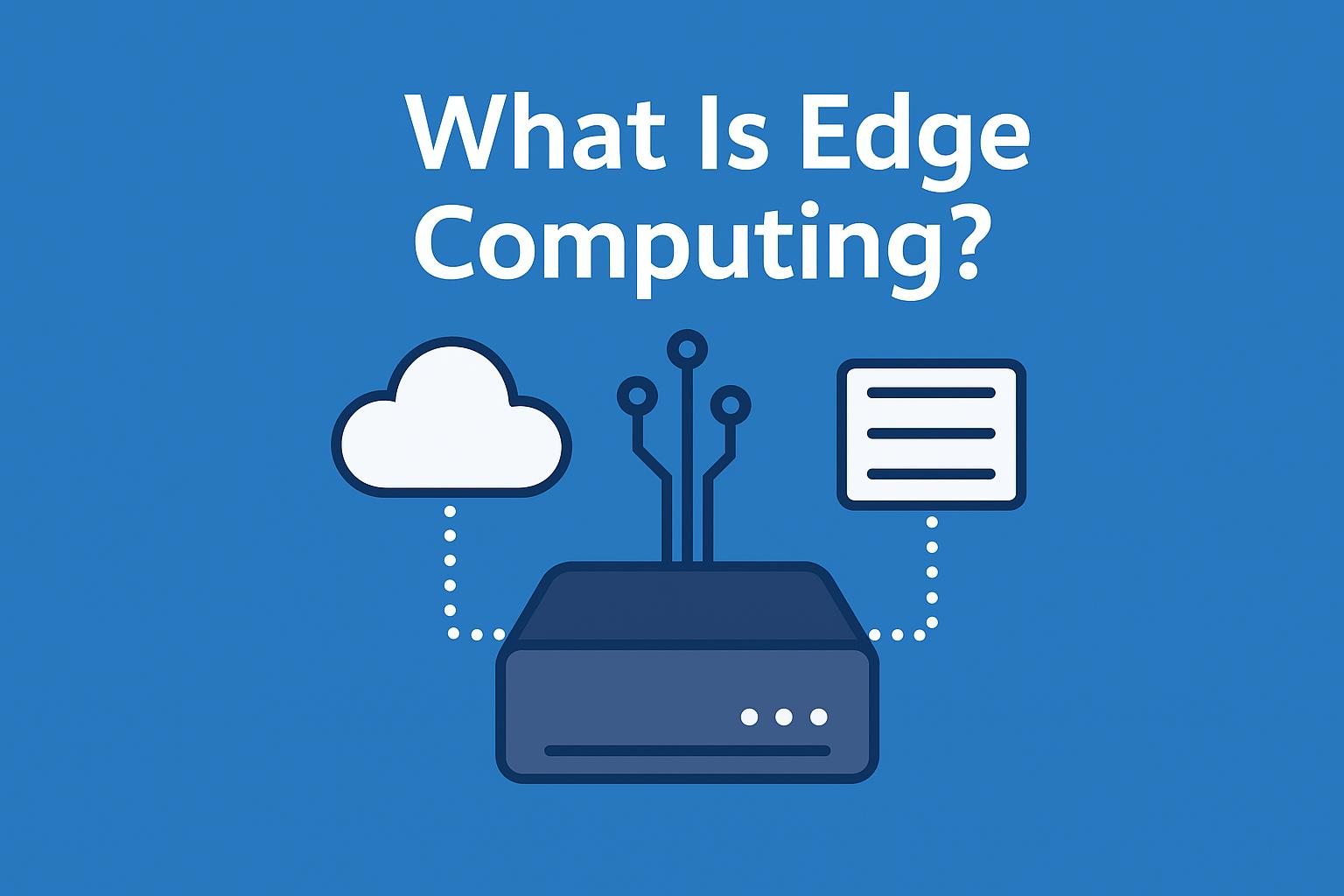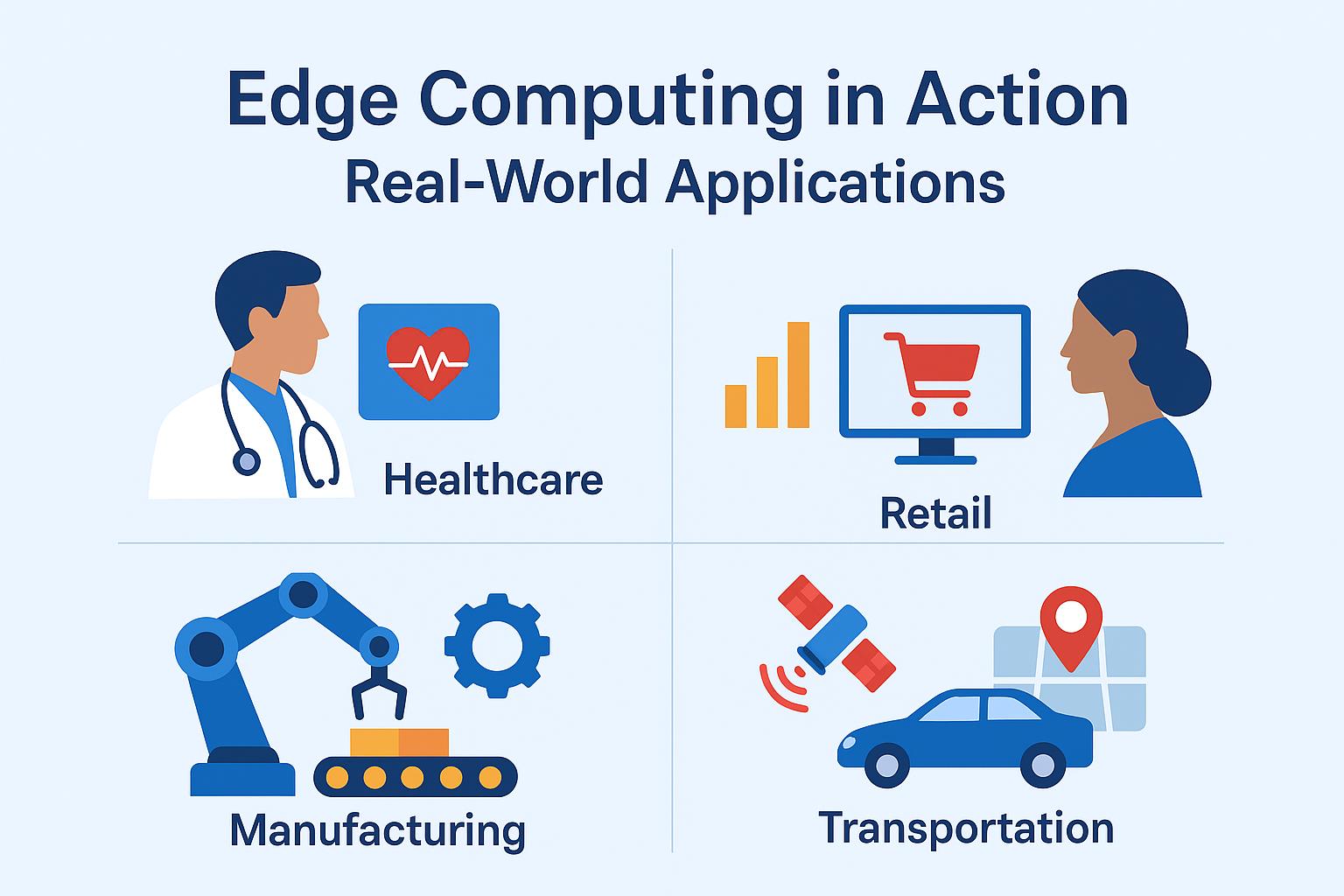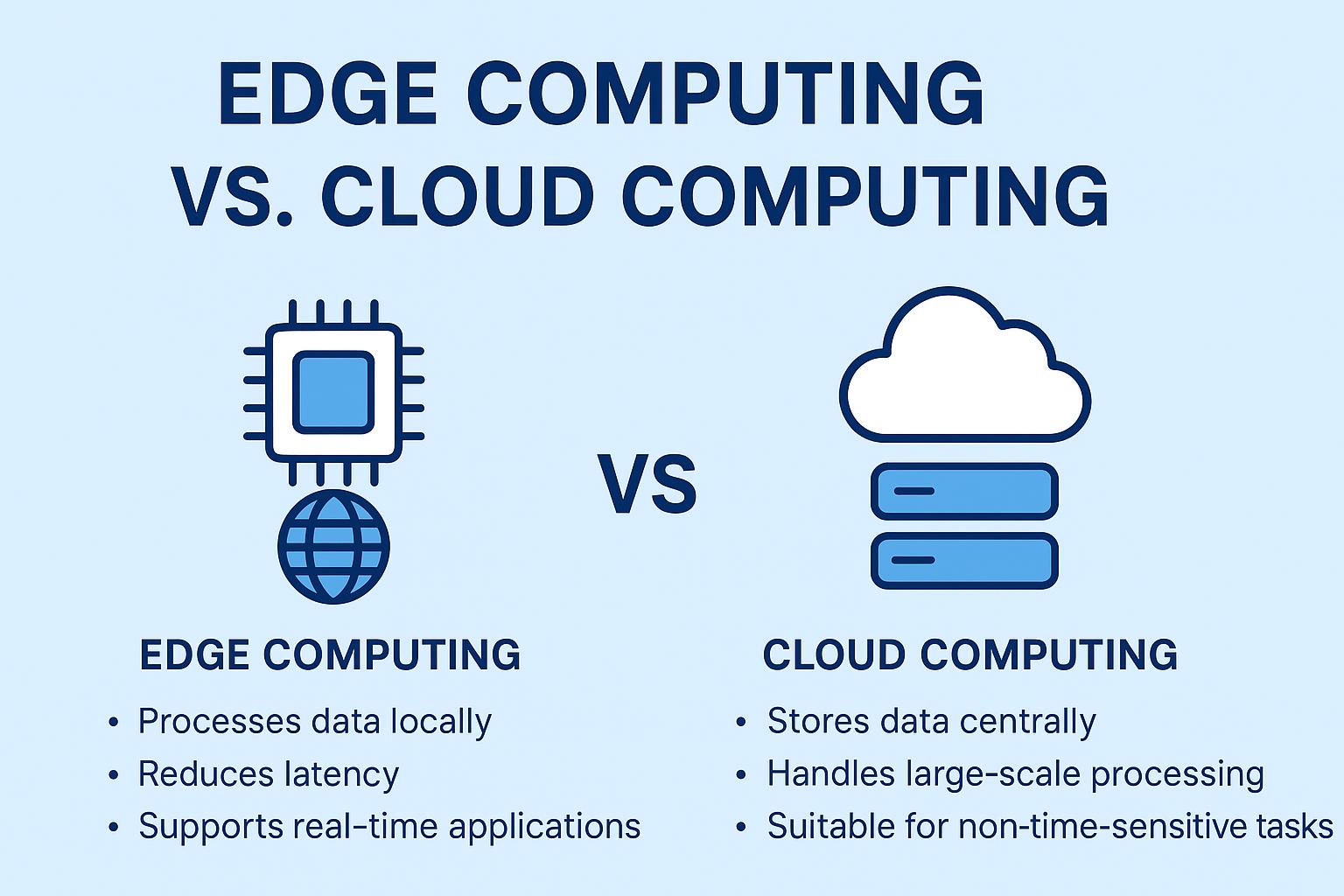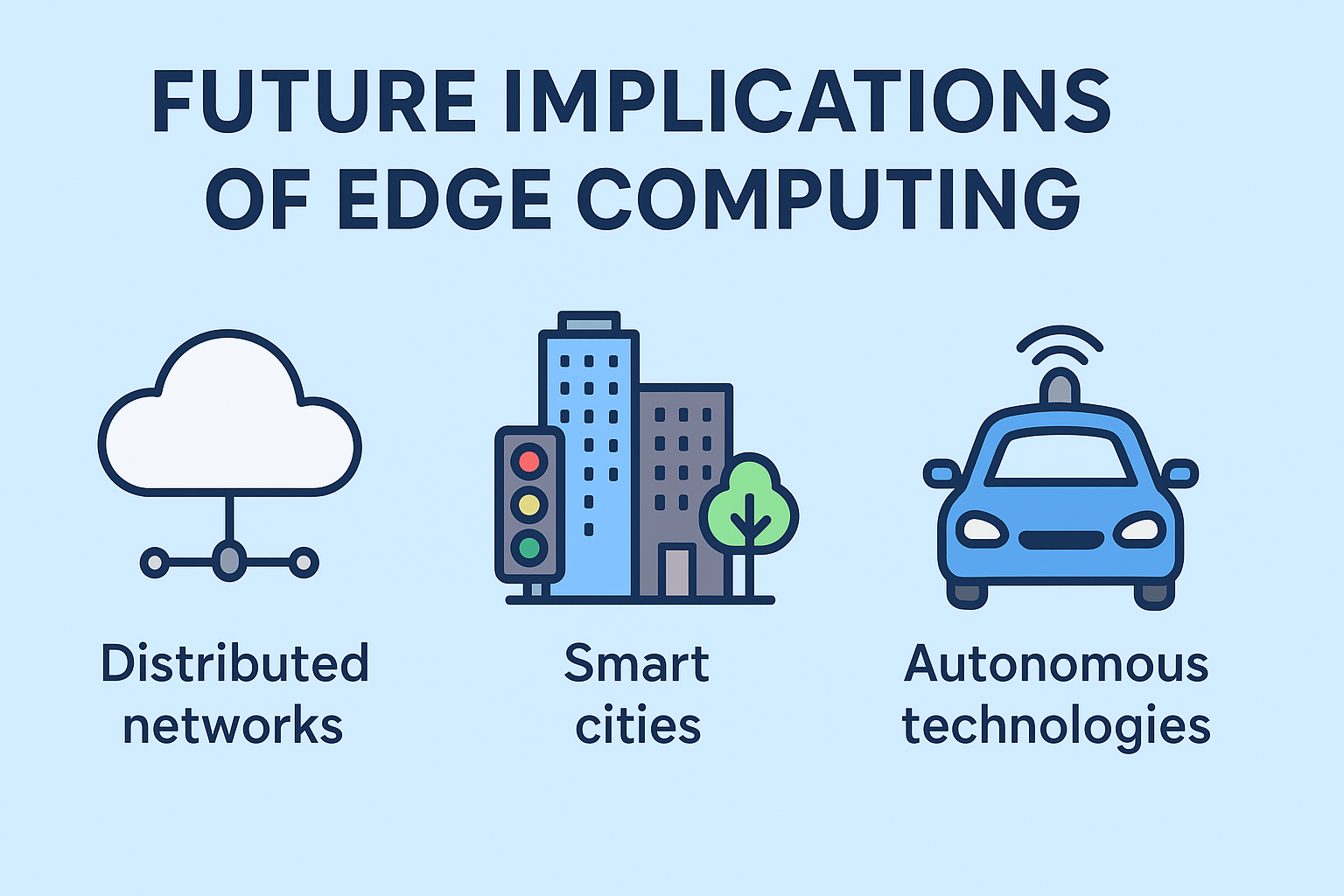Edge computing is transforming the way organizations process, manage, and utilize data. Unlike traditional cloud computing, where information travels to centralized servers for analysis, edge computing brings processing closer to the source of data generation. This shift allows faster responses, reduced latency, and real-time decision-making—capabilities critical in industries such as autonomous vehicles, smart cities, healthcare, and industrial automation.
As digital technologies continue to expand, the sheer amount of data generated by billions of connected devices grows exponentially. Cloud computing has played an essential role in managing this volume, but its limitations—particularly in latency-sensitive applications—make edge computing an increasingly attractive solution. Businesses now recognize that immediate data insights can drive efficiency, enhance customer experience, and create a competitive advantage.
Read More: The Impact of Wearable Technology on Omnichannel Retail
What Is Edge Computing?

Edge computing refers to the practice of processing data locally, near its point of creation, instead of sending it to remote cloud servers. By analyzing information closer to the edge of the network, businesses can reduce delays, improve performance, and limit dependence on continuous internet connectivity.
For example, consider a smart factory machine collecting operational data. With edge computing, that data is processed directly on-site, allowing immediate adjustments to prevent breakdowns. Without edge computing, the data would need to travel to a remote cloud server, be analyzed, and then return with insights—a slower cycle that could compromise productivity.
This approach offers more than speed. By keeping critical operations local, edge computing helps reduce bandwidth consumption and improves reliability. For businesses operating in remote areas or industries where milliseconds matter, such as finance or emergency healthcare, edge computing provides an essential advantage.
Edge Computing in Action: Real-World Applications

The impact of edge computing can already be seen across industries:
- Healthcare: Edge computing enables rapid analysis of patient data, from heart monitors to imaging devices. In emergencies, split-second decisions can mean the difference between life and death, making local data processing essential.
- Retail: Stores use edge computing to track inventory, analyze customer behavior, and deliver personalized shopping experiences in real time. Faster insights improve customer satisfaction while reducing operational costs.
- Manufacturing: Predictive maintenance powered by edge computing prevents costly downtime. Machines analyze their own data continuously, alerting operators before potential failures occur.
- Transportation: Autonomous vehicles rely on edge computing for navigation, obstacle detection, and split-second decision-making. Sending this data to the cloud would introduce delays too dangerous for real-world driving.
- Smart Cities: From traffic management to public safety systems, smart cities leverage edge computing to process information locally, keeping urban environments efficient and secure.
These use cases highlight how edge computing is not a futuristic concept but an active driver of digital transformation.
Building Skills for the Data-Driven Era
With edge computing fueling data-intensive industries, professionals need advanced data management and analysis skills. A master’s degree in data science has become a valuable pathway for those seeking expertise in handling large datasets, developing machine learning models, and designing secure data systems.
Graduates with advanced data science training are well-positioned to thrive in industries adopting edge computing. They not only understand how to analyze data but also know how to optimize systems for speed, scalability, and security. As organizations prioritize real-time decision-making, professionals with these qualifications hold a competitive edge in the job market.
Search engines often highlight programs with keywords like “master’s degree in data science”, reflecting the growing demand for specialized education in this field.
Edge Computing vs. Cloud Computing

Although often viewed as competitors, edge computing and cloud computing complement one another.
- Cloud Computing Strengths: Centralized storage, large-scale analytics, and processing of complex tasks that are not time-sensitive.
- Edge Computing Strengths: Real-time processing, reduced latency, and localized decision-making for tasks that require immediate responses.
For example, a logistics company may use edge computing to track delivery trucks in real time, while sending aggregated data to the cloud for broader trend analysis. This hybrid model combines the scalability of cloud infrastructure with the immediacy of edge processing.
Businesses that strategically integrate both approaches can achieve greater flexibility, efficiency, and resilience in their operations.
Security and Privacy Challenges
While edge computing offers speed and efficiency, it also raises important security and privacy concerns. Unlike centralized cloud data centers, which benefit from sophisticated security infrastructure, edge devices often operate in less controlled environments.
- Vulnerability: Devices at the edge—such as IoT sensors, cameras, and smart appliances—may lack robust defenses, making them attractive targets for cybercriminals.
- Data Privacy: Since information is processed locally, sensitive data is less likely to be intercepted during transmission. However, businesses must ensure strong encryption, authentication protocols, and regular software updates to prevent unauthorized access.
- Compliance: With data regulations such as GDPR and HIPAA, organizations must remain vigilant about how edge devices handle and store personal information.
Security must evolve alongside edge computing adoption, requiring continuous monitoring and proactive defense strategies.
Economic Impact of Edge Computing
Beyond technical benefits, edge computing brings significant economic advantages. By processing data locally, businesses reduce bandwidth costs and cloud storage expenses. For small and medium-sized enterprises (SMEs), this translates into affordable access to advanced technology without the financial burden of large-scale cloud infrastructure.
Additionally, edge computing drives innovation and job creation. As demand grows, technology companies may establish local hubs to support edge deployment, creating opportunities in underserved regions. Startups are also emerging to build specialized edge solutions, fueling competition and accelerating technological progress.
This localized economic boost demonstrates how edge computing is more than just a technological shift—it’s a catalyst for broader economic growth.
Future Implications of Edge Computing

The expansion of the Internet of Things (IoT) ensures that edge computing will play an increasingly central role in global infrastructure. Billions of devices—from wearable health trackers to industrial sensors—will depend on fast, reliable, and decentralized processing.
In smart cities, traffic control systems, energy grids, and public safety networks must respond instantly to ensure safety and efficiency. Similarly, global industries such as finance, retail, and healthcare will continue to invest in edge solutions to maintain competitiveness.
Over time, we may see a shift toward a more distributed internet, where computing happens across countless localized nodes instead of centralized data centers. This evolution could lead to faster, more resilient systems with fewer bottlenecks, reshaping how businesses and consumers interact with technology.
Frequently Asked Questions:
What is edge computing and how does it differ from cloud computing?
Edge computing processes data locally at or near the source, while cloud computing relies on remote servers. This reduces latency and speeds up decision-making.
Why is edge computing important for industries today?
Industries such as healthcare, manufacturing, and transportation rely on edge computing for real-time insights, faster responses, and improved efficiency.
What are the main benefits of edge computing?
Key benefits include reduced latency, lower bandwidth costs, enhanced privacy, real-time processing, and improved reliability in critical operations.
What challenges does edge computing face?
Challenges include data security risks, device vulnerabilities, compliance with privacy regulations, and the need for skilled professionals.
How will edge computing shape the future of data management?
Edge computing will drive the Internet of Things (IoT), smart cities, and autonomous technologies, creating faster, more resilient digital infrastructure.
Can edge computing and cloud computing work together?
Yes. Many businesses use edge computing for real-time processing while relying on cloud computing for large-scale data storage and analysis.
What skills are needed to work in edge computing?
Professionals need expertise in data science, cybersecurity, IoT, and distributed systems. Advanced education, such as a master’s in data science, can be especially valuable.
Conclusion
Edge computing is reshaping the digital landscape by bringing data processing closer to its source. This shift enables faster decision-making, reduces costs, and enhances efficiency across industries such as healthcare, retail, manufacturing, and transportation. While challenges like security and privacy remain, the benefits of speed, reliability, and scalability make edge computing a vital part of modern IT strategies. As billions of connected devices fuel the growth of the Internet of Things, the demand for localized, real-time processing will only increase. Organizations that embrace edge computing—while investing in skilled professionals and robust security measures—will gain a competitive advantage in a rapidly evolving digital world.

